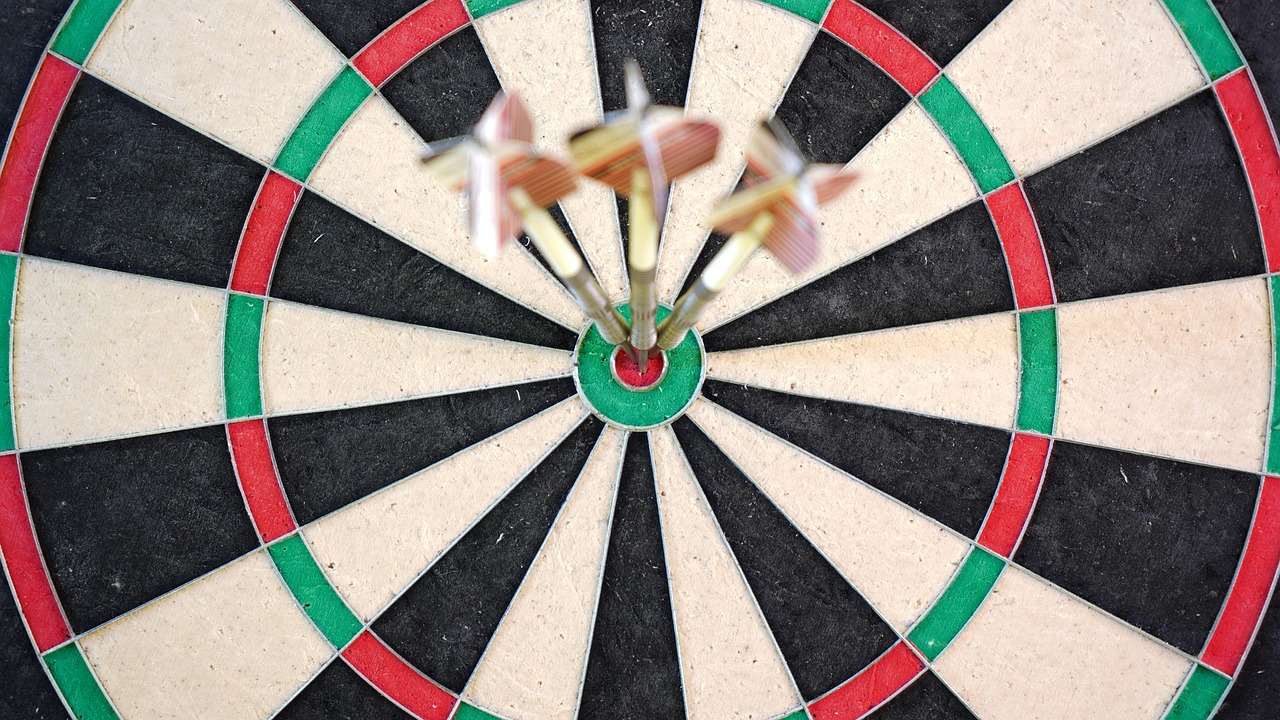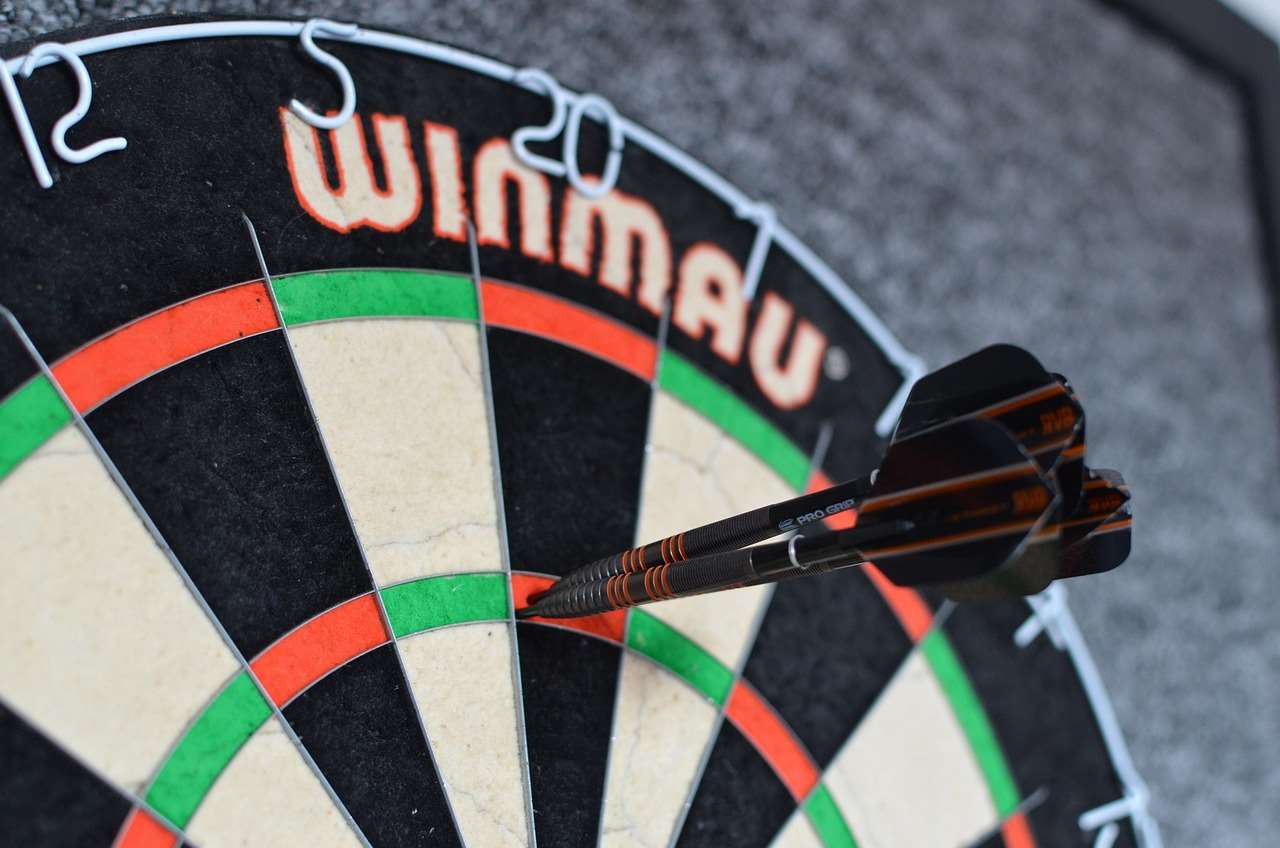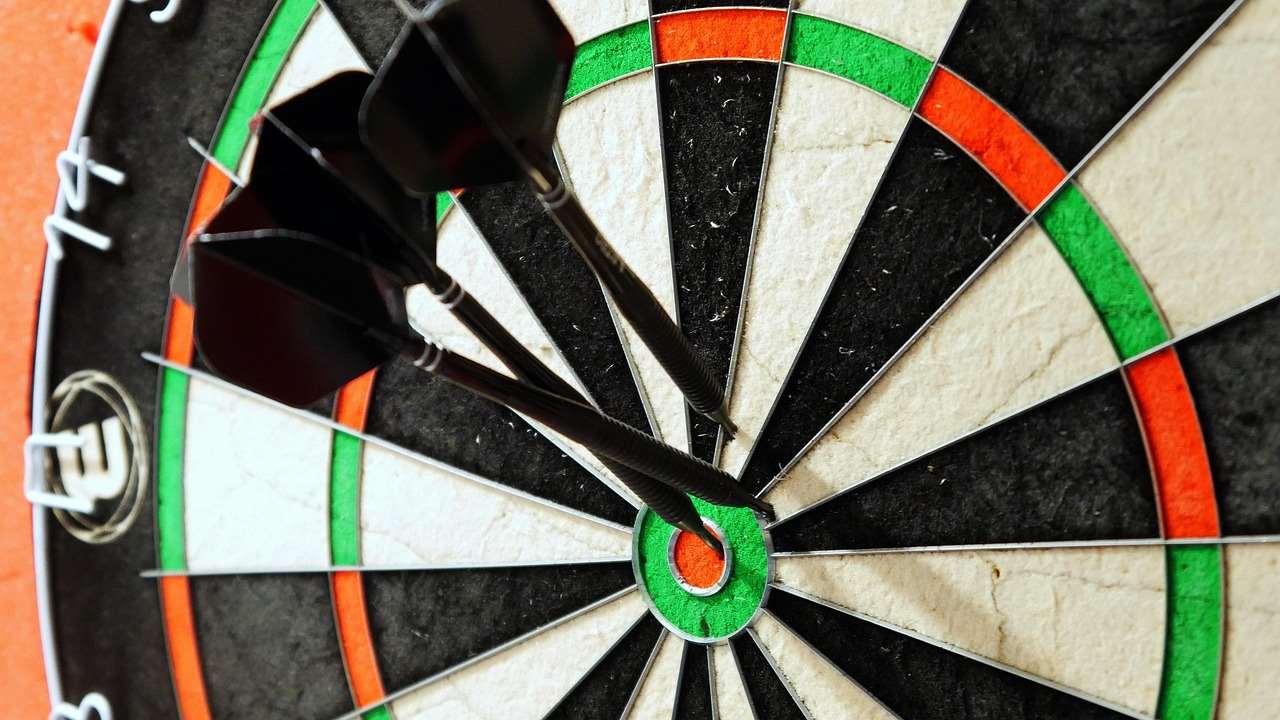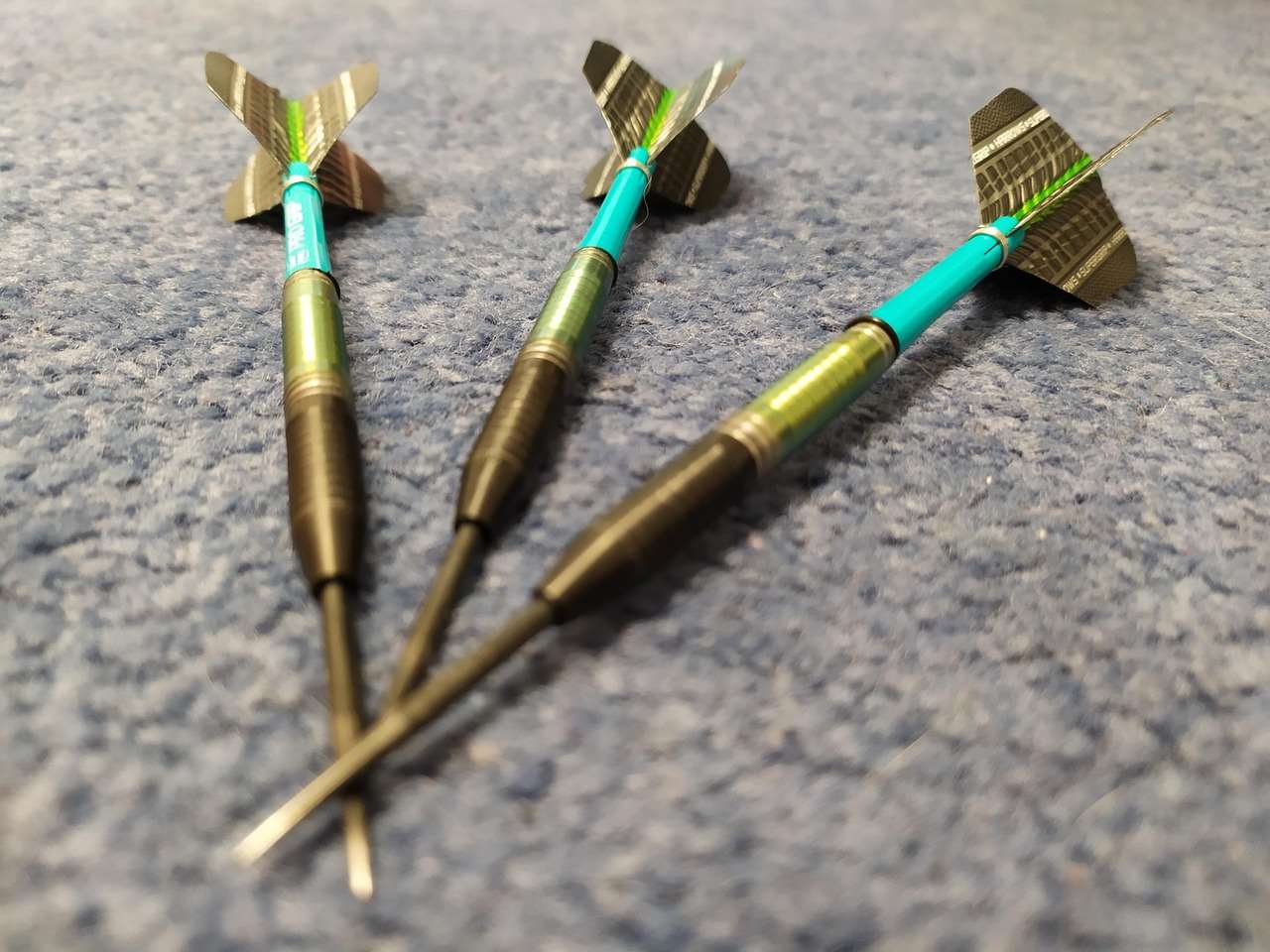Maintaining oche line visibility is crucial for fair and accurate dart games, ensuring consistent throwing distances. This article will explore several methods for keeping your oche line clear and prominent, from simple marking techniques to more durable solutions, while also covering the impact of proper lighting and regular maintenance.
⚠️ Still Using Pen & Paper (or a Chalkboard)?! ⚠️
Step into the future! The Dart Counter App handles all the scoring, suggests checkouts, and tracks your stats automatically. It's easier than you think!
Try the Smart Dart Counter App FREE!Ready for an upgrade? Click above!
The Importance of a Clearly Defined Oche Line
The **oche line**, also known as the toe line or throw line, dictates the minimum distance a player must stand from the dartboard. A clearly visible oche line is essential for several reasons:
- Fairness: It ensures all players throw from the same distance, promoting fair competition.
- Consistency: A consistent throwing position helps players develop a more reliable throwing technique.
- Rule Adherence: It helps enforce the rules of the game and prevents disputes about throwing distance.
- Safety: Provides a boundary and helps prevent players from getting too close to the dartboard, reducing the risk of accidents.
Without a well-defined oche line, games can become disorganized, inaccurate, and potentially unsafe. Therefore, investing time and effort in maintaining oche line visibility is a fundamental aspect of any serious or casual dart setup.

Methods for Marking and Maintaining the Oche Line
Several methods can be used for marking and maintaining the oche line. The best choice depends on factors such as the type of flooring, the frequency of use, and the desired level of permanence.
Temporary Marking Solutions
These are ideal for casual games, temporary setups, or when you need flexibility.
- Painter’s Tape: A low-tack tape that is easy to apply and remove without damaging the floor. It’s a cost-effective option for temporary marking.
- Chalk Line: Using a chalk line can create a thin, easily visible line, especially on carpets. However, it’s prone to smudging and requires frequent re-application.
- Removable Stickers: These are specifically designed for marking the oche line and can be easily peeled off when not in use.
Permanent Marking Solutions
For dedicated dart setups or higher-traffic areas, a more permanent solution is preferable. Consider options such as:
- Floor Marking Tape: Durable tape designed for marking floors in industrial and commercial settings. It comes in various colors and widths, offering excellent visibility and longevity.
- Painted Line: Using durable floor paint is a long-lasting option. Use stencils for a professional-looking straight line. Ensure proper surface preparation for optimal adhesion.
- Metal or Plastic Strip: A more robust solution involves installing a metal or plastic strip into the floor. This provides a physical barrier that is highly visible and durable.

Choosing the Right Material for Your Oche Line
Selecting the right material depends on several factors:
- Floor Type: Consider the surface you’re marking. Tape works well on smooth surfaces, while paint might be better for concrete. Carpets may require specialized tape or a more substantial barrier.
- Traffic: High-traffic areas require more durable materials like floor marking tape or a physical strip.
- Budget: Temporary solutions are generally more affordable, while permanent solutions involve a higher upfront cost.
- Aesthetics: Choose a material and color that complements your dart setup and overall room decor.
Remember to clean the surface thoroughly before applying any marking material to ensure proper adhesion and longevity. You might want to check out Basic Darts Fundamentals for Beginners for tips on setting up your dart area.
Enhancing Visibility with Proper Lighting
Even with a well-marked oche line, poor lighting can make it difficult to see, especially in dimly lit environments. Proper lighting is crucial for maintaining oche line visibility and enhancing the overall dart-playing experience.
Types of Lighting for Dartboards
- Overhead Lighting: A general overhead light source can provide ambient illumination but may not be sufficient to highlight the oche line effectively.
- Dartboard Surround Lighting: This type of lighting typically consists of a ring of LEDs mounted around the dartboard, providing focused illumination and reducing shadows.
- Floor Lighting: A strategically placed floor lamp can illuminate the oche line directly, making it highly visible. Ensure it doesn’t create glare or obstruct the player’s view.

Optimizing Lighting for Oche Line Visibility
Here are some tips for optimizing lighting to enhance the visibility of your oche line:
- Use Bright, White Light: White light provides better contrast and clarity than yellow or colored lights.
- Avoid Glare: Position light sources to minimize glare, which can obscure the oche line and fatigue the eyes.
- Adjust Light Angle: Experiment with different light angles to find the optimal position for highlighting the oche line without casting shadows on the dartboard.
- Consider Dimmable Lights: Dimmable lights allow you to adjust the brightness to suit different lighting conditions and personal preferences.
Investing in good lighting is an investment in your game. A well-lit dartboard and oche line will improve your accuracy and overall enjoyment.
Regular Maintenance and Cleaning
Maintaining oche line visibility requires regular cleaning and maintenance. Dust, dirt, and debris can accumulate on the oche line, making it less visible and potentially slippery. Regular cleaning will help keep it clear and safe.
Cleaning Different Types of Oche Lines
- Taped Lines: Wipe down taped lines with a damp cloth to remove dust and dirt. Avoid using harsh chemicals that could damage the tape. Replace the tape when it becomes worn or faded.
- Painted Lines: Clean painted lines with a mild detergent and water. Scrub gently with a soft brush to remove stubborn stains.
- Metal or Plastic Strips: Wipe down metal or plastic strips with a damp cloth or use a specialized cleaner for the material.

Preventative Measures
Taking preventative measures can help reduce the need for frequent cleaning and maintenance:
- Use a Doormat: Place a doormat near the dartboard to trap dirt and debris before they reach the oche line.
- Regularly Vacuum or Sweep: Vacuum or sweep the area around the dartboard regularly to remove dust and dirt.
- Avoid Spills: Be careful to avoid spills near the oche line, as liquids can stain or damage the marking material.
Consistent maintenance will ensure your oche line remains visible, safe, and contributes to a positive dart-playing experience. Perhaps Alternative darts rules for home play can provide a fresh perspective and reduce wear and tear from standard games.
Troubleshooting Common Oche Line Problems
Even with the best care, you may encounter problems with your oche line. Here are some common issues and how to address them:
Faded or Worn Markings
Over time, markings can fade or wear down due to foot traffic and cleaning. Here’s how to deal with it:
- Re-apply Tape: If you’re using tape, simply replace it with a fresh strip.
- Touch Up Paint: For painted lines, touch up the paint with a matching color. Prepare the surface properly before applying new paint.
Uneven or Crooked Lines
Lines can become uneven or crooked due to shifting or improper application.
- Re-measure and Re-mark: Use a measuring tape and level to ensure the line is straight and at the correct distance from the dartboard. Re-mark the line as needed.
Slippery Surfaces
Some marking materials can become slippery, especially when wet.
- Apply Anti-Slip Coating: Consider applying an anti-slip coating to the oche line to improve traction.
- Use Textured Tape: Choose a tape with a textured surface for better grip.

The Impact of Oche Line Placement on Gameplay
The placement of the oche line significantly impacts gameplay. A correctly positioned oche line ensures fair play and allows players to develop consistent throwing techniques. Here’s how the placement affects the game:
- Distance: The official distance from the dartboard to the oche line is 7 feet 9 1/4 inches (2.37 meters). Accuracy in this measurement is paramount.
- Consistency: A consistent oche line position helps players develop muscle memory and throwing accuracy. Ensure the oche line is always in the same place.
- Comfort: The position should allow players to stand comfortably and maintain a stable stance. Consider individual player preferences and adjust slightly if necessary.
Accurate and consistent oche line placement is fundamental to fair and enjoyable dart games. You might find additional ideas at Adapting darts rules for small spaces: tips and tricks, especially if space is a constraint in setting up your dart area.
Conclusion
Maintaining oche line visibility is essential for fair play, consistent throwing techniques, and a safe dart-playing environment. By selecting the appropriate marking material, implementing proper lighting, and performing regular maintenance, you can ensure your oche line remains clear, visible, and contributes to an enjoyable dart-playing experience. Whether you opt for a temporary solution like painter’s tape or a permanent one like a painted line, the key is to prioritize visibility and consistency. Ensure regular cleaning and prompt correction of any issues to keep your games fair and fun. Now, go check your oche line and make sure it’s ready for your next game!
Hi, I’m Dieter, and I created Dartcounter (Dartcounterapp.com). My motivation wasn’t being a darts expert – quite the opposite! When I first started playing, I loved the game but found keeping accurate scores and tracking stats difficult and distracting.
I figured I couldn’t be the only one struggling with this. So, I decided to build a solution: an easy-to-use application that everyone, no matter their experience level, could use to manage scoring effortlessly.
My goal for Dartcounter was simple: let the app handle the numbers – the scoring, the averages, the stats, even checkout suggestions – so players could focus purely on their throw and enjoying the game. It began as a way to solve my own beginner’s problem, and I’m thrilled it has grown into a helpful tool for the wider darts community.